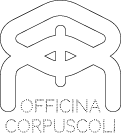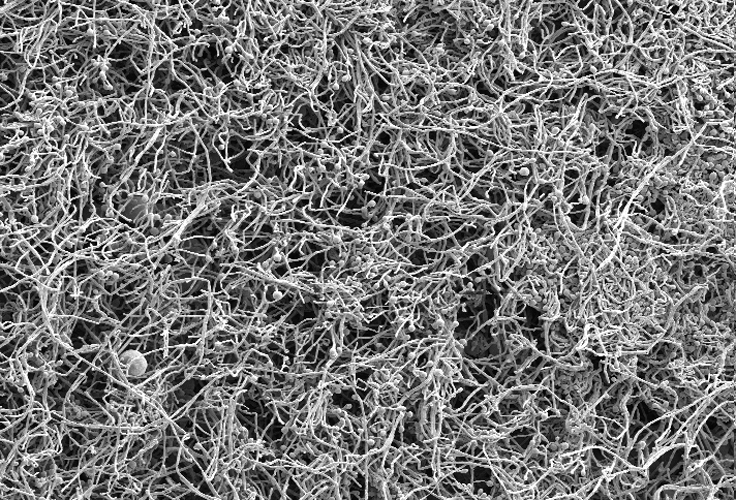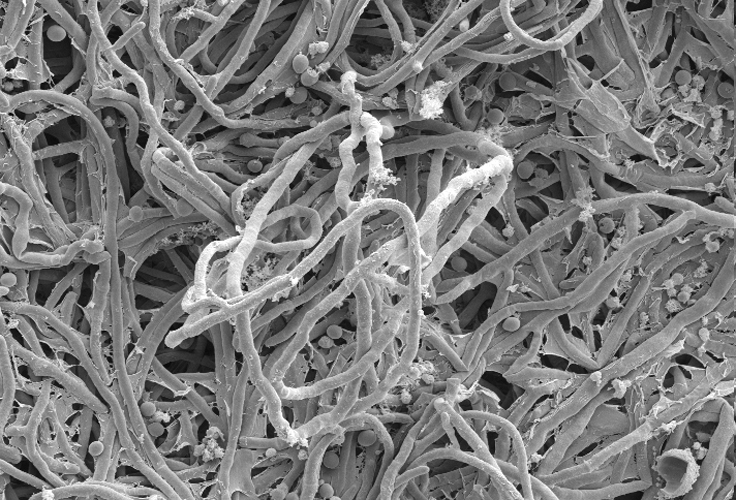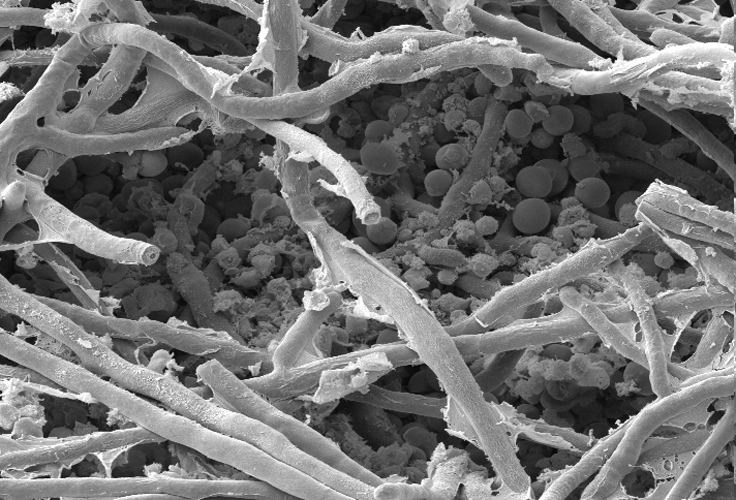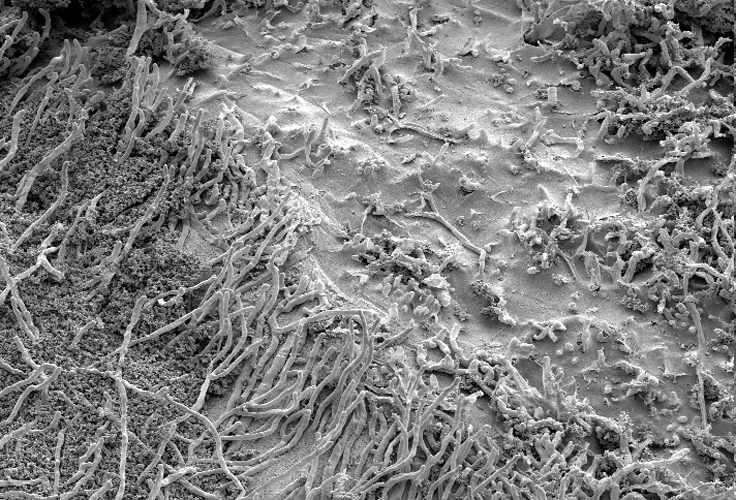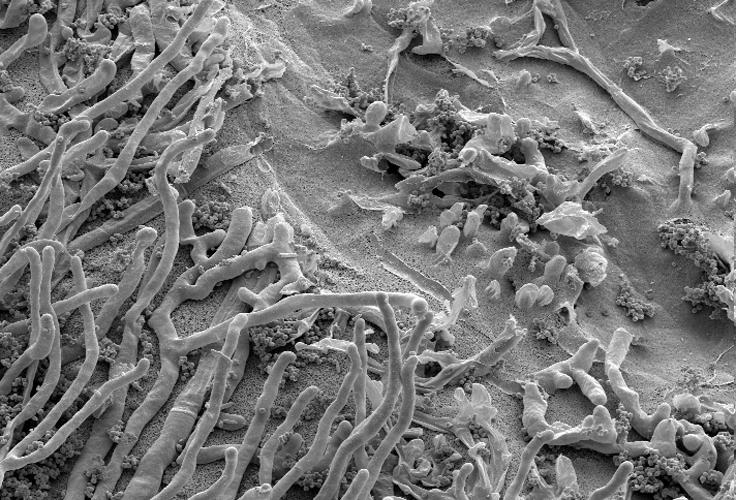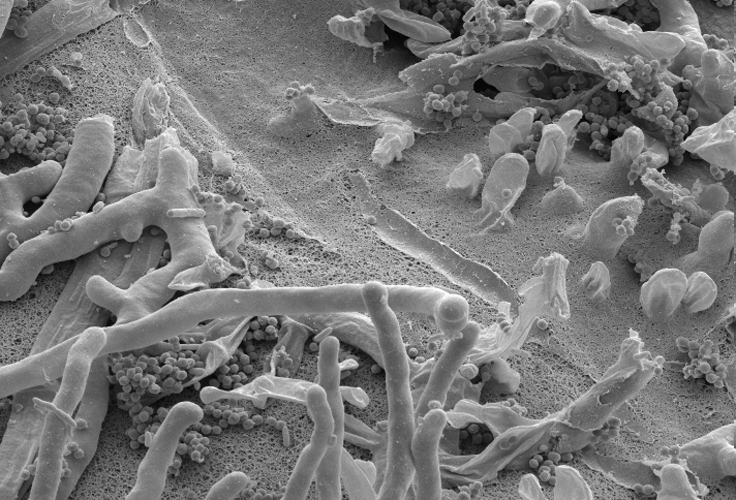DA4GA 2011
Click here to go to System Synthetics Images Gallery.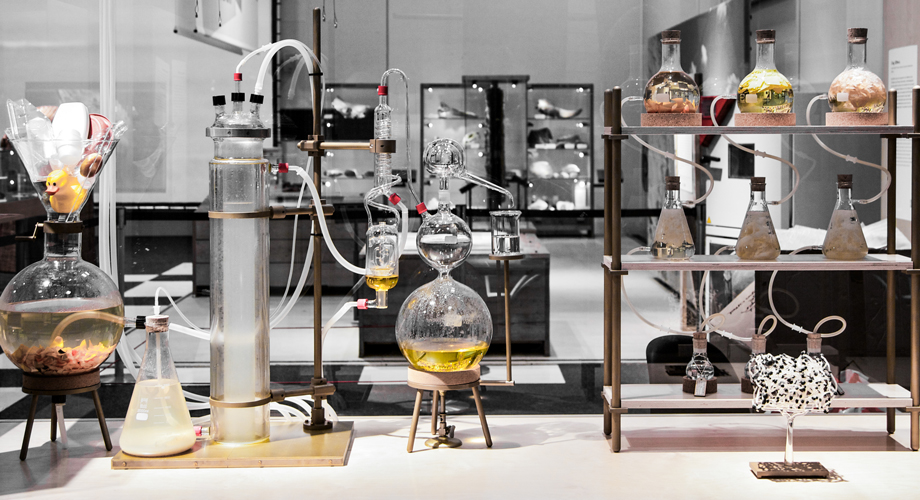
System Synthetics is a design-research project exploring the possibility of actively collaborating with microbial systems within processes of deconstruction and cyclical trans-mutation of matter, by openly raising questions about the use of contemporary scientific tools and technologies (i.e., synthetic biology).
The project was born as a reaction to the continued production and use of long-lasting, synthetic materials deriving from extractive processes and from the exploitation of finite valuable resources (i.e., plastics), as embedded in the many short-life products that designers and companies keep developing and commercialising extensively, on a global scale.
While observing and reflecting on the dreadful impact and major environmental consequences deriving from current systems of production and further fuelled by consumers’ “disposable” behaviour, the designer started researching tangible opportunities as well as visionary pathways to allow re-integrating such almost-immortal materials within the transformative cycling of every existing thing. Hence, possibly enabling to deliver benefits in tune with the functioning of the larger ecosystem that we – humans – are part of, rather than harming it.
To do so, System Synthetics critically investigated the possibility of encouraging a new form of (endo-)symbiosis by creating an entirely new man-made organism resulting from the combination of two entirely different types of fungal organisms. This, by combining their skills, namely the capacity of a selected wood-rotting fungus (i.e., Phanerochaete chrysosporium) to effectively degrade tough synthetic compounds, with the ability of a yeast (i.e., Saccharomyces cerevisiae) to ferment the resulting biomass and produce alcohol/biofuels, looking at the latter as valuable energy source. In short, turning apparently irreversible materials back to some of the main constituent ingredients from which they originated.
By actively working in the lab, conducting and observing numerous design-driven experiments in partnership with the selected microbial agents, it was possible to achieve suitable preliminary results, as tangible facts allowing to push the vision further towards the development of an dynamic artefact that could effectively communicate the contents and opportunities emerging from the insightful cross-disciplinary research performed.
Comprising a self-conceived set of interconnected glass vessels and a tailor-made bioreactor system integrating the selected microbial systems, the installation plays with the merge of visual languages from apparently distant domains (i.e. Design & Science), while openly encouraging the public to critically question overall perceptions related to the use of contemporary forms of technology (i.e., synthetic biology) for responding to actual, most urgent topics, such as the ongoing environmental emergency.
Finally, within the described framework and through the use of tools such as a process film and physical models designed for the scope, System Synthetics functioned as a bold statement, addressing the design industry at large, and the specific responsibility that designers hold as ‘creators’.
System Synthetics was developed in collaboration with the Kluyver Centre for Industrial Fermentation in the context of the DA4GA (Designers&Artists for Genomics Award, 2011 – now BAD – Bio Art & Design Award).
